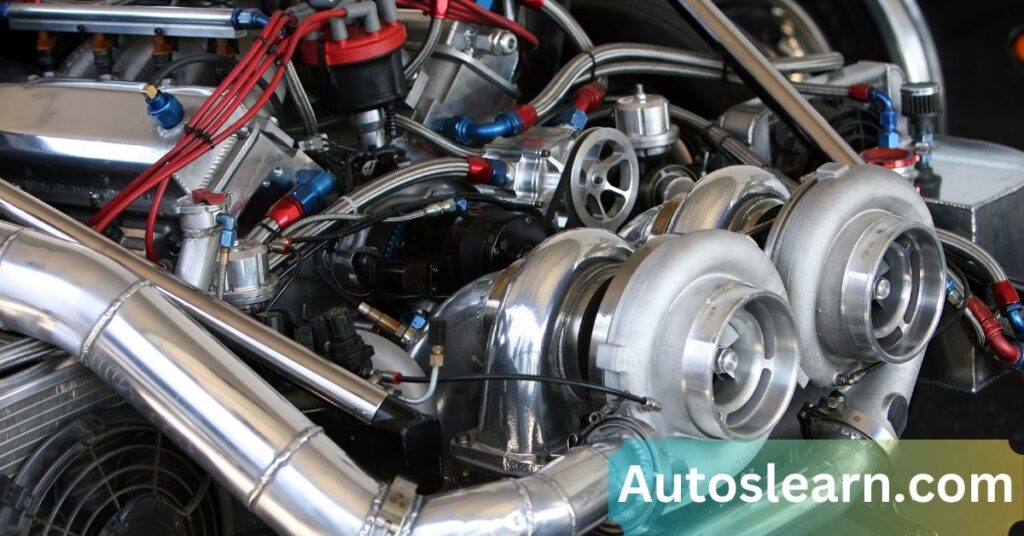The Audi A5 often comes with a turbocharger, especially in its 2.0-liter and 3.0-liter engines. A turbocharger uses exhaust from the engine to spin a turbine, which pushes extra air into the engine to boost power.
In simple terms, it helps the engine burn more fuel by pushing in more air, so the car gets more power from the same engine. Because turbos run very hot and spin fast, they need good lubrication and care. If a turbo fails, the engine loses power and may require a repair.
Key point: Data from parts catalogues and repair sites show that most Audi A5 turbos last roughly 120,000–200,000 km (about 75,000–125,000 miles) before failure. The exact mileage can vary significantly based on care and model.
For example, a parts guide lists a 2.0-litre A5 turbo lasting about 150,000–200,000 km (93k–124k mi), while a 2.0-litre diesel A5 turbo lasts around 120,000–150,000 km (75k–93k mi). In short, if maintenance is spot-on, you can often expect 80,000–120,000 miles on a healthy A5 turbocharger before it may need rebuilding or replacement. However, some owners have seen turbos fail much sooner (as low as 60k–70k miles), so watching for warning signs is essential.
What Is a Turbocharger and What Does It Do?
A turbocharger is like a small fan driven by exhaust gas. When the engine burns fuel, hot exhaust spins a turbine wheel. The turbine shares a shaft with the compressor wheel, which pulls in fresh air and pushes it into the engine. With that extra air, the engine can burn more fuel and produce more power than it usually would. In an Audi A5 (for example, the 2.0 TFSI petrol engine), the turbo means a 2.0L engine can produce power similar to that of a much bigger engine.
Because the turbocharger works under very high pressure and temperature, it needs clean oil and good cooling to survive. The spinning turbine gets extremely hot, and oil is sprayed into the turbo to lubricate and cool its bearings. It can wear out or even seize if the oil is dirty or low or the turbo gets too hot.
Audi warns that if your oil is old or dirty, it can turn into sludge and clog oil passages — which can end up damaging or even ruining the turbo. That is why regular oil changes with the correct oil type are critical.
In the Audi A5 line, turbochargers are used on most 2.0T engines (both petrol TFSI and diesel TDI) and 3.0-liter diesel engines. Some higher-performance A5s have twin turbos, but the basic idea is the same: more air + more fuel = more power.
Audi A5 Average Turbo Lifespan (Mileage):
How many miles can you drive before an A5’sA5 turbo gives out? The answer depends on the engine and how well it’s cared for. Industry sources give these rough lifespans:
| Engine (Audi A5) | Years/Model | Typical Turbo Lifespan (km) |
| 2.0 TFSI (gasoline) – B8 | 2008–2016 (Coupe/Conv/Sportback) | 150,000–200,000 km (~93k–124k mi) |
| 2.0 TFSI (gasoline) – B9 | 2017–present (Sportback) | 130,000–180,000 km (~81k–112k mi) |
| 2.0 TDI (diesel) – B8 | 2008–2016 (Coupe/Conv/Sportback) | 120,000–150,000 km (~75k–93k mi) |
| 2.0 TDI (diesel) – B9 | 2017–present (Sportback) | 120,000–180,000 km (~75k–112k mi) |
| 3.0 TDI (diesel) – B8 | 2014–2017 (Coupe/Conv/Sportback) | 130,000–150,000 km (~81k–93k mi) |
These ranges come from parts catalogues and repair databases. They indicate that smaller 2.0-litre engines tend to last a bit longer (up to ~200,000 km) in ideal conditions, while turbos on diesel engines often average around 120k–150k km.
The newer B9-generation 2.0T A5 shows a range of 130k–180k km, which is similar to or slightly shorter than the older B8 models. In miles, that means most turbos make between 75,000 and 120,000 miles on average if well-maintained.
However, real-world experiences vary. As one example, a 2010 Audi A4 (same 2.0T engine) had its turbo fail at just 63,000 miles. This was brought up in a lawsuit about VW/Audi turbo problems, showing that failures can happen even under 70k miles. On the other hand, some owners report original turbos lasting well beyond 100k miles with good care.
Also Read: Which Audi Drive Select Is Best For Gas Mileage-A Complete Guide
Factors Affecting Turbo Life Of Audi A5:

Several factors greatly influence how long a turbocharger will last. Key factors include:
1. Oil quality and changes:
Clean oil is the turbo’s lifeblood. Dirty oil or skipped oil changes can quickly damage the turbo. Audi recommends changing the oil either every 10,000 miles or once a year—whichever comes first. Using the right synthetic oil is also essential—especially for turbocharged engines. Many mechanics say that old, contaminated oil starves the turbo of proper lubrication and cooling.
2. Maintenance habits:
Along with oil, things like the air filter and PCV system matter. A dirty air filter forces the turbo to work overtime—and worse, it can let harmful debris slip through. In dusty areas, swapping out the filter regularly can go a long way in preventing early wear.
Also, allowing the engine to warm up for 30 seconds before driving hard can help oil properly reach the turbo. After driving hard, some experts recommend letting the engine idle briefly before turning it off so the turbo can cool down properly. Failing to let the turbo idle cool after high RPMs can lead to heat soak and bearing damage.
3. Driving style:
Driving aggressively—like revving the engine hard, hauling heavy loads, or doing quick bursts of acceleration—puts extra strain on the turbo. The additional heat and pressure cause faster wear. In contrast, gentle driving and avoiding constant full-throttle use tend to extend turbo life. European auto shops note that RS and S models, which are often driven hard, frequently face turbo issues if maintenance lags. In short, revving hard without good oil flow or cooldown time is a sure way to shorten turbo life.
4. Climate and conditions:
Extreme conditions can matter. Very hot weather or high-altitude driving may strain a turbo. Freezing weather means longer warm-up times (cold oil is thicker and takes longer to circulate). Though not always cited, it’s sensible that extremes increase stress. Also, very dirty or salty environments (e.g. off-road, snowy roads) require extra filter care and might introduce contaminants. One guide suggests that drivers in dusty areas should “ensure air filters are clean to prevent foreign object damage”.
5. Fuel quality:
High-quality fuel helps keep the engine and turbo clean. Poor fuel (low octane or contaminated diesel) can cause carbon buildup on the turbo’s intake valves and internals. A car maintenance blog points out that using the wrong fuel can cause carbon buildup in both the turbo and engine. So, to avoid problems, always stick to the fuel grade Audi recommends. Low-grade fuel can increase deposits and reduce turbo efficiency over time.
6. Manufacturing/design:
Some turbo designs are inherently more fragile. For example, Audi’s early EA888 Gen2 2.0T engines had known oil supply issues that could kill a turbo early. The later EA888 Gen3 improved this. But generally, turbos rely on exact parts. Faulty oil feed lines or a defective wastegate actuator (even heat shielding) can cause premature failure. CarComplaints mentions lawsuits over VW/Audi turbo designs that allegedly wore out earlier than expected.
In summary, proper upkeep is the top way to extend turbo life: use the right oil, change it on schedule, replace filters, warm up/cool down, and avoid abuse. Neglecting any of these, let’s wear set in faster.
Symptoms of An Audi A5 Failing Turbo:
Early warning signs can help you spot a turbo problem before it fails. The most common symptoms include:
1. Loss of power:
The engine feels weaker, especially under acceleration. The car may not accelerate as quickly as it used to, or it might feel sluggish when merging or climbing hills. Many owners say the first clue is “the engine feels less responsive” when the turbo is going bad.
2. Loud whining or whistling noises:
A classic turbo failure sign is a high-pitched whistle, siren, or whine when you rev the engine. If the turbo’s bearings or blades are damaged, you might hear a loud whoosh or rattling under boost. (Sometimes mechanics describe it as a fast siren-like sound.)
3. Increased exhaust smoke:
Oil can leak into the exhaust if the turbo’s seals or oil lines fail. This can cause blue or grey smoke from the tailpipe, especially on startup or when accelerating. Black smoke is also possible if the engine floods fuel to compensate for a low boost. Either way, unusual smoke often points to oil or fuel getting where it shouldn’t.
4. Check Engine Light (CEL):
A failing turbo often triggers engine fault codes since the boost pressure or airflow is off. The car’s computer may detect a low boost, a vacuum leak, or strange AFR (air/fuel ratio) readings. In practice, a CEL related to boost control or exhaust pressure can mean turbo trouble. Never ignore a CEL after noticing other symptoms.
5. Higher oil consumption or leaks:
The turbo might leak if you suddenly need to add oil more often. Also, visually check under the car or engine bay for fresh oil. A single-engine oil leak might also be from the turbo return line. You can sometimes see oil residue on or around the turbo housing and pipes in a bad turbo. (A guide on turbo failure mentions that worn seals can let oil “leak into the intake,” and the car may burn more oil.)
6. Poor fuel economy:
When the turbo starts to lose efficiency, the engine usually burns more fuel just to maintain the same level of power. Increased fuel usage without an apparent reason can indicate that the turbo isn’t doing its job.
If you notice any of these signs — especially more than one — have the car checked soon. A mechanic will typically listen for the whine, inspect the turbo area for oil leaks, and may use a boost gauge or scan for boost-related codes to confirm the turbo’s condition.
Also Read: Audi Whining Noise When Accelerating-Causes and Fixes
Audi A5 Models and Engines: Who’s Turbo Affected?
Most Audi A5 models come with turbo engines, so potential turbo issues can affect many versions of the A5:
1. A5 B8 (2008–2016):
This generation offered a 2.0 TFSI petrol (gasoline) turbo, a 2.0 TDI turbo diesel, and a 3.0 TDI twin-turbo diesel in higher trims. The 2.0 TFSI engine (the EA888 Gen2 and Gen3) is standard. The high-performance S5 used a supercharged 3.0 petrol (no turbo), and the RS5 later (F5) used twin-turbo 2.9L. So, the 2.0TFSI petrol and 2.0TDI diesel A5s mainly share the turbo life data given above.
2. A5 B9 (2017–present):
This newer model (F5/8W) again has a 2.0 TFSI petrol (now with mild-hybrid on some trims) and a 2.0 TDI diesel. The B9 also has a new 3.0 TFSI twin-turbo V6 in the S5. The mild-hybrid 2.0 T uses slightly different hardware, but its turbo lifespan is in the 130k–180k km range, similar to the standard 2.0T. The 3.0 V6 turbos in the S5 are robust but have not been cited with exact lifespan data; however, they are identical components and likely last a similar range in miles when cared for.
Generally, the smaller 2.0L engines (petrol and diesel) have similar expected turbo lives (around 120k–180k km). The bigger 3.0L diesels use two turbos, but each sees the same kind of wear, so their lifespans (~130k–150k km) are comparable on a per-turbo basis. The gasoline turbo (2.0 TFSI) can be sensitive to carbon buildup on the intake valves (a separate issue). However, that doesn’t directly shorten the turbo’s mechanical life as long as maintenance is done.
Because Audi updated engine generations, some later A5 turbos have slight improvements. For example, the first A5 2.0T (EA888 Gen2) had more reports of early failures (sometimes called “turbine wheel disconnects”), whereas the later Gen3 2.0T seems a bit more durable. However, no engine is immune overall: older and newer A5 turbo engines can fail early if neglected.
Real-World Insights from Owners and Mechanics About Audi A5:
Mechanics and owner forums echo the data above. An Audi performance shop notes that turbo failures are costly and often linked to driver abuse or poor maintenance. They stress that oil contamination or running the engine too hot can kill a turbo. One common tip is: “If oil changes are not performed regularly or quality is poor, the turbo’s bearings can wear out.” In other words, the change in oil prices is arguably the most critical factor.
On the owner’s side, stories vary. Some drivers have reached 200,000+ km (125k mi) on the original turbo with good care. Others see problems sooner. For example, a 2010 A4 (same 2.0T engine) had a turbo failure at 63,000 miles — a cautionary tale that not all cars hit the high end of the range. There have even been class-action complaints for certain 2008–2014 Volkswagen/Audi 2.0T vehicles, claiming the turbo was prone to premature failure. This highlights that some early engines did have weak points.
On forums like AudiWorld and Audizine, owners often advise each other to check for oil leaks, unusual sounds, or turbo shaft play when buying a used Audi. Many mention a gentle whoosh noise as a red flag. Some experienced mechanics recommend test-driving aggressively (briefly) and listening for the turbo boosts into action; if the car hesitates or whines abnormally, the turbo might be on its way out.
While anecdotal forums emphasize what the data suggests: regular maintenance and gentle driving can push a turbo past 100k miles, aggressive use or skipped service can halve its life.
Extending Audi A5 Turbo Life with Good Maintenance:

You can make any turbo last longer by following solid maintenance habits. Tips include:
1. Change oil and filter on schedule:
Always use the grade of synthetic oil Audi specifies. Many A5 owners use 5W-40 or 0W-40 synthetic oils. Stick to the 10,000-mile (or annual) interval at a minimum. Some owners even change the oil every 5k–7k miles under hard use. Clean oil removes heat and keeps sludge away from the turbo.
2. Clean air and fuel systems:
Replace the engine air filter at regular intervals. A clogged filter forces the turbo to work harder and risks ingesting debris. To avoid deposits, keep the fuel system healthy (injectors clean, good fuel). One maintenance guide notes that keeping “air filters clean to prevent foreign object damage” is key. Also, check for oil leaks in the intake or PCV system since leaks can unbalance the turbo’s spinning parts.
3. Cool down the turbo:
After a long or hard drive, give the engine a minute or two at idle before shutting down. This allows the oil to keep flowing and cools down the hot turbocharger. A South African mechanic’s blog recommends idling “for a few seconds” after hard driving to allow a cooldown period. Avoid cutting the engine immediately after highway or track use.
4. Gentle driving on startup:
Right after starting the car, especially in cold weather, drive gently for the first minute. This gives time for oil to reach full pressure in the turbo and for engine parts to warm up. Avoid hard acceleration until the tachometer (RPM gauge) is above ~2000 and rising smoothly. This warm-up care can keep bearings happy.
5. Use quality fuel and parts:
Putting low-octane fuel into a turbocharged engine can hurt both performance and turbo health. Audi recommends at least mid-grade unleaded for the 2.0T; higher-octane or fuel-economy additives can help reduce carbon. Using OEM or high-quality replacement turbos (if needed) also matters—cheap imitations may not last.
In practice, owners who log their oil change miles fix minor issues (like an oil line clamp or boost hose), and baby engines tend to report longer turbo life. The steps above—clean oil, warm/cool engine, and good fuel—are repeated advice from mechanics and service guides. They all boil down to the same point: a well-lubricated, cool turbo survives years longer than one that’s neglected or overheated.
Checking a Used Audi A5’s Turbo:
If you’re shopping for a used A5, evaluating the turbo condition and history before buying is wise. Here’s what to look for:
1. Service history:
Ask the seller for records of oil changes, especially if synthetic oil was used at the recommended intervals (every 10k mi/16k km or sooner). Check if the car had any primary services or repairs involving the turbo or related systems (like PCV cleanup). A well-documented vehicle with regular service is less likely to have turbo abuse.
2. Visual inspection:
Pop the hood and inspect the turbo area (often on the exhaust side of the engine). Look for oil leaks or residue on or around the turbocharger, intercooler pipes, or intake hoses. Black, oily grime can suggest a leaking turbo seal. Check all hoses and clamps for cracks or looseness. Also, peek at the boost (charge) pipes for any oil inside; a healthy turbo should not be oil-soaked internally.
3. Engine start and idle:
On startup, listen for any loud turbo sounds (chatter or rattling) before revving the engine. Let the car idle and watch for smoke or roughness. A failing turbo can cause uneven idle or light grey/blue smoke on startup.
4. Test drive:
Listen for a consistent boost “whoosh” and smooth spool-up during a drive. If you have a boost gauge (or an OBD scanner), check that the boost pressure meets the spec. Accelerate in a safe area to see if the car pulls strongly. Hesitation, turbo lag beyond normal, or a loud whistle might be signs of trouble. Also, ensure that no check engine lights are on and that the transmission shifts normally.
5. Professional scan:
Have a shop scan the car’s computer for any stored faults related to boost pressure or turbo performance. Many shops can also do a quick boost pressure test to see if the turbo holds the correct boost level without leaks.
6. Clutch and engine wear:
A worn clutch or engine bearing (in the timing chain or other parts) can indirectly stress a turbo (through pressure spikes). If the car has very high miles and other issues, the turbo may be at risk, too.
No check is foolproof, but combining a careful visual check with a test drive and service record review will give a good sense of the turbo’s health.
Audi A5 Turbo Replacement: Parts and Cost:

If an Audi A5 turbo does fail and needs replacement, be prepared for a significant repair. A turbo can cost a lot, and labour can be intensive because it’s inside the engine bay by the exhaust. Here are key points:
1. Turbo unit cost:
An OEM or high-quality aftermarket turbocharger for an A5 can range from $800 to $1,300 (not including labour). For example, an online parts store lists A5 turbochargers for around $797 to $1,323 (plus a core deposit of around $100–$200). Aftermarket brands (Rotomaster, etc.) may be cheaper than a genuine Audi/VW part, but both are thousands in total.
2. Labor and total cost:
According to RepairPal, the total cost to replace an A5 turbo assembly (parts and labour) averages about $2,658–$3,314. This aligns with shop quotes that often come in the $2,500–$4,000 range, depending on location and model. That estimate usually includes a new or reman turbo, gaskets, oil lines, and several hours of mechanic time (repair shops estimate around 6–8 hours of labour).
3. What to replace:
Mechanics typically recommend replacing the entire turbocharger assembly, not just parts, because balancing and calibrating an old turbo can be error-prone. When doing the job, it’s wise to replace related parts: the turbo oil feed line (it can get clogged), oil filter and oil change (to clean any debris), and sometimes the PCV valve or intercooler hoses if they show wear. Some shops also replace the exhaust manifold gasket and tighten turbo mounts.
4. Warranty and remains:
Some rebuilt (remanufactured) turbos come with limited warranties. Check if any extended warranty or recall applies to your specific A5 year/engine—for example, VW previously extended turbo warranty on some EA888 engines.
In summary, turbo replacement is expensive but straightforward: expect to pay in the low thousands of dollars. Since the cost is high, it is important to have a clear diagnosis (maybe from a scan or mechanic) before authorizing such a repair. Also, ensure high-quality parts and fresh oil/filter after the repair to avoid starting the life of the new turbo with dirty oil.
Frequently Asked Questions:
Q1. How long does a turbo last on an Audi A5?
Typically, Audi A5 turbos last between 80,000 and 120,000 miles, depending on engine type, driving habits, and maintenance. Diesel versions often see slightly shorter lifespans than petrol models.
Q2. What causes turbo failure in the A5?
The most common causes are dirty or old engine oil, lack of proper maintenance, aggressive driving without warm-up/cooldown, clogged air filters, and poor fuel quality. All these factors increase wear on the turbo’s bearings and seals.
Q3. Can I keep driving with a failing turbo?
It’s risky. While the car might still run, a failing turbo can cause significant damage if oil leaks into the engine or exhaust. It’s best to have it inspected and repaired promptly to avoid further costs.
Q4. How can I make my A5’s turbo last longer?
Use high-quality, manufacturer-approved oil; change it on schedule; let the engine warm up before pushing it hard; clean or replace air filters regularly; and avoid sudden shutdowns after high-speed driving to let the turbo cool down properly.
Q5. Is replacing an Audi A5 turbo expensive?
Yes. Replacing a turbo on an A5 can cost between $1,500 and $3,000, depending on labour, parts, and whether you choose OEM or aftermarket components. Rebuilding might be cheaper, but only if the damage is minor.
Conclusion:
The turbocharger in your Audi A5 is a precision-built component that delivers performance and efficiency—but only when it’s cared for properly. On average, you can expect a well-maintained turbo to last between 80,000 and 120,000 miles, though early failures can happen if oil quality, service intervals, or driving habits are ignored.
Knowing the symptoms of a failing turbo—like power loss, smoke, and strange noises—can help you act early and avoid major repairs. Whether you’re driving a B8 or B9 model, diesel or petrol, staying on top of routine maintenance is the best way to extend your turbo’s life and keep your A5 running at its best.
